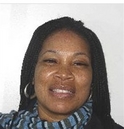of the crash, it’s remarkable that far more people were not killed and injured:
Officials Seek Clues in Train Crash; Death Toll at 9
By IAN URBINA
June 23, 2009
WASHINGTON—As the death toll rose to nine and at least two other people were in critical condition at area hospitals on Tuesday, questions remained about the causes of the worst commuter rail crash in the city’s history.
In the accident, a train on the Metro system’s heavily used Red Line barreled at what passengers said was considerable speed into another train, which was stopped between the Takoma and Fort Totten stations about 5 p.m. Monday. The rear train ended up atop the stopped train in a mangled mass of metal and glass.
The driver of the rear train, Jeanice McMillan, 42, of Springfield Va., was among those killed, officials said. She was hired in 2007 and began operating trains last December.
Federal investigators said they planned on reviewing the transit system’s signals, track conditions, and train maintenance as well as the operator’s experience and cell and text transmissions.
They said they first wanted to figure out why the moving train’s computer system, which among other things controls the brakes, apparently did not automatically engage just before the crash. They also raised concerns about why city officials had not heeded warnings from federal safety officials to replace older cars, like the one that caused the crash because they were not sufficiently crash-ready.
“We made recommendations in 2006 about the crash worthiness of the 1000 series cars,” a National Transportation Safety Board spokeswoman, Debbie Hersman, said at a news conference Tuesday. Ms. Hersman said the federal safety board had recommended that the Washington Metropolitan Area Transit Authority, which run Metro’s rail and bus systems, “either retrofit those cars or phase them out of the fleet.”
“They have not been able to do that and our recommendation was not addressed,” Ms. Hersman said, She called Metro’s response to the recommendations as “unacceptable.”
Metro’s general manager, John B. Catoe Jr., said the city was waiting to receive proposals “over the next month or so” to replace the old cars. The new trains were still years away from being installed, he added.
The crash site, which was above ground near New Hampshire Avenue, a major Washington thoroughfare, remained a horrific scene Tuesday as rescue workers continued using heavy cranes and saws to pick apart the crumpled wreckage and to check for remaining bodies. Blood, broken glass and jagged metal was strewn across the tracks.
The oncoming train had approached with such speed that much of its floor was sheared off by the force of the impact as it wedged itself on top of the stopped train. One car was crushed into a quarter of its original size.
Seven people who died were women; the other two were men, according to a Metro spokeswoman, Candace Smith,. She said that five bodies were recovered Monday and four more on Tuesday. Names will not be released until city officials contact next of kin.
The crash sent more than 70 people to area hospitals.
Investigators said they would need to figure out whether Ms. McMillan, the operator, applied the brakes as she approached the stationary train. Ms. Hersman said city transit system procedures require that during rush hour, trains run on computerized, rather than manual, systems. Investigators will examine the wreckage to see if Ms. McMillan could have seen the train in time to override the automatic system and apply the brakes to avert the accident, she said.
“Keeping the alertness of the driver is a major issue in a totally automated system,” said Robert E. Gallamore, a train safety expert who was the deputy Federal Railroad Administrator under President Jimmy Carter.
He added that computerized traffic control systems are an important safety precaution in dense urban areas with short distances between trains, frequent stops and a host of other variables for operators to juggle. But a consequence, he said, can be “operator inattention.”
In a Boston trolley accident in May and a commuter train accident in Los Angeles last fall, operators were sending text messages just prior to the accidents. Since then, the California Public Utilities Commission has banned train engineers from using cell phones on duty.
Monday’s accident was the second fatal Metro crash in the system’s 33-year history. In January 1982, three people died in a derailment. The only other collision between Metro trains occurred in 2004.
The investigation promised to be more difficult because the train that crashed into the stationary one did not have any recorders on it, even though federal safety officials recommended the city outfit all trains with these devises. Modern event recorders, like the black boxes that are standard on airplanes, log warning signals and give information about speed, power and brake application. .
Nine data recorders were being carried by the train that was struck, which was made of newer 3000 and 5000-series train cars. All are expected to be recovered and analyzed.
Since the new-model train was stopped at the time of the crash, investigators said they hope its recorders will tell them how fast the train was propelled forward after it was hit.
And Ms. Hersman noted, “While we don’t have recorders, we may have physical evidence.”
Matthew L. Wald and Ariel Sabar contributed reporting.
[end of article]
A. Zarkov writes:
James H. writes:
